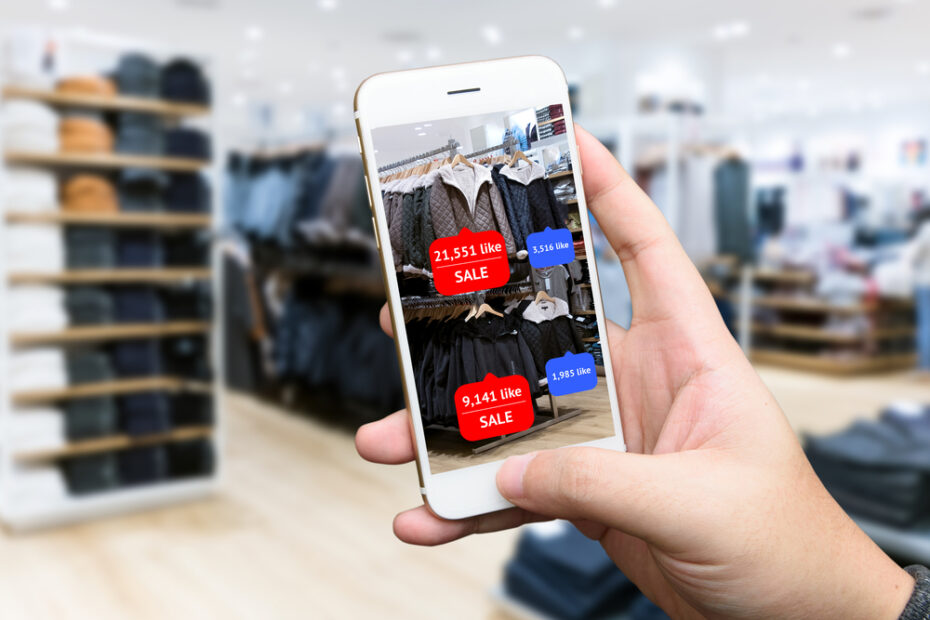Do you search the store and then buy on-line?
Over the weekend I went high street shopping. It’s not my favourite pastime but I was persuaded that I needed to see the items before making a purchase. After many hours of searching, I found the item I wanted. However, I didn’t make the purchase in the store. Not unsurprisingly, I reached for my smartphone and made a competitor price comparison. The store in question had an on-line website, but the item was cheaper in several other on-line stores. So I did what most people are doing these days and purchased the same item on-line. It wasn’t time sensitive item so I could wait for the delivery, which happened to arrive the next day. Just one of the many examples of how retail technology is changing the game!
Has retail technology shifted power to the consumer?
In some ways, I feel guilty, but on the other hand, the store left me with no choice, particularly when the price difference was significant. I’m sure this practice of checking out products and pricing them on the web is growing. One other aspect of the transaction was the lack of information available to the sales staff in the store. They were completely unaware of other retailers selling the item in question and had no way of countering my price arguments.
With powerful smartphone and tablet technologies, consumers have the ability to check prices within seconds. It would seem to me that retailers are not reacting fast enough to counter this growing trend of viewing products and ordering via another channel.
Could relationships with Brands change?
This is not only an issue for Retailers but also for Brands. New consumer buying practices are changing the way Brands view their traditional relationship model with retailers. Increasingly Brands are focused on selling directly to ensure value and (margin) are maintained. This is also causing internal challenges for the Brands themselves.
What technologies can make the difference?
As I see it retailers need to embrace technology to inform staff as well as customers. I believe there are several technology areas that could transform and add more value for both retailers and consumers alike.
Price analytics and automation
Price is still a powerful sales incentive and if retailers do not compare favourably with their competitors then it puts you at a disadvantage. Reacting to price changes is key and dynamic pricing will become the norm, so system price automation will become a major trend. Rather than relying on manual price changes, automated price changes will react to competitor’s movements in the market.
Data integration
Data and insight will enable retailers and brands to make more strategic decisions. Analytics will become an integral part of the organisation. Decisions made on facts rather than gut feeling will become the mainstay of management decisions. Convergence of data from various sources, price, stores, products and even weather are currently already in place. But better computer models, including AI and improved data modelling, will drive improved product targeting.
Information accessibility
Stores have to improve the customer experience with better information displays. Simple store information and interactive displays give shoppers a better retail experience. Retail staff will need to have more information on products and should have more comparative price analysis available to counter potential price argument.
Personalisation & beacon technology
While I’m not a fan of being bombarded with adverts, I do think that some level of personalisation will arrive in the retail environment. Beacon technology does allow for targeted approaches but this should be used sensitively otherwise it could have the opposite effect.
VR and related simulation
Virtual Reality (VR) could add an exciting dimension to the retail experience, especially in areas like fashion, clothing, home, kitchen or even personal experiences. Nevertheless, VR could add some value to the consumer experience but needs to be part of a package of add-ons, but also ensuring that price is never forgotten in the mix.
Logistics and robotics
As surveys have shown, the number of retail staff has declined rapidly over the past years with the closure of many large high street stores. However, over the same period, staff in distribution roles has significantly increased. This reflects the growth in on-line and the predominance of convenience as a prime purchasing factor.
However within all industries, manpower is expensive and the long -term model will be one of shifting away from human resources to fully automated robotics. This may take time but increased technology advancement in robotics will undoubtedly remove resources from the distribution model.
It’s not just about technology
My final thought is that high street retailers are still following the organisational model set out many years ago. Hotels, Banks, Airlines and others have changed the way their staff interact with their customers. Many processes have changed in these industries and technology has complimented the way customers interact with the technology.
These industries have invested heavily in organising and transforming processes as well as introducing service orientation backed up with technology. Most organisations that transform don’t rely just on technology. It has to follow a vision where the customer is at the heart of the solution.



